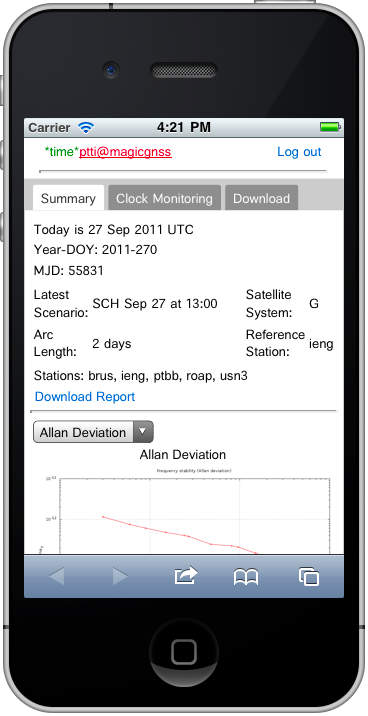New app for clock synchronization via GPS
September 29th, 2011 by Ricardo Píriz Time transfer via satellite is nowadays the primary means to synchronize distant atomic clocks on ground. Clock synchronization is fundamental for example for maintaining UTC (Universal Time Coordinated), the official scale by which the world regulates clocks and time. Computer servers, online services and other entities that rely on having a universally accepted time use UTC for that purpose.
Time transfer via satellite is nowadays the primary means to synchronize distant atomic clocks on ground. Clock synchronization is fundamental for example for maintaining UTC (Universal Time Coordinated), the official scale by which the world regulates clocks and time. Computer servers, online services and other entities that rely on having a universally accepted time use UTC for that purpose.
Each national Timing Laboratory contributing to UTC keeps its own independent timescale, normally based on a very stable, temperature controlled, atomic clock or set of clocks. Then, all contributing timescales are inter-compared and combined in order to create an even more stable, international timescale (UTC).
But how to compare clocks located on different continents? One possibility is to use satellites that are in simultaneous view from the different laboratories. Enters GPS. By connecting each clock to a GPS receiver, in such a way that the measurements to the satellites are time-stamped by the external atomic clock instead of the internal receiver clock, and combining satellite measurements (RINEX files) from all these timing receivers in a sophisticated algorithm, it is possible to solve for all the system unknowns (satellite orbits, atmospheric delays, etc.) and compute the relative offsets of all ground clocks involved. This is precisely what the ODTS algorithm (Orbit Determination and Time Synchronization) within magicGNSS does.
The magicGNSS web tool allows automatic uploading of RINEX files containing satellite measurements (via ftp), and to schedule the ODTS process to run as often as every hour. In this way it is possible to monitor on an hourly basis the behaviour of a network of atomic clocks distributed worldwide.
Lab operators must be able to react quickly in case of problems. This is why we have developed, together with INRiM, the Italian Metrological Institute, a magicGNSS smartphone app for Timing applications. With the new app the user can monitor the clock evolution in terms of phase and frequency offsets, and Allan deviation. It is possible to plot the recent clock behaviour, as well as to plot the long-term clock evolution. The app is actually a web application optimized for smartphone screens (iPhone, Android and Windows Mobile are supported).



